Fear and Mountain Biking Part 2 (Read part 1 here: https://wp.me/p49ApH-1vq)
Fear is a powerful and often misunderstood emotion that has some effect on every mountain bike ride we do. The fear we ALL experience while mountain biking varies greatly in intensity from rider to rider and from trail to trail. Most riders think of pro downhill racers as fearless but in my 19 years of coaching them and 15 years of being one I have found that even the fastest pro downhill racers experience fear, on beginner trails!
So the idea of “No Fear” is comical at best, we all experience fear and it isn’t always a bad thing, fear can save us from injury and keep us from doing things we aren’t skilled enough to do. On the other hand, fear that is not in proportion to the risk we are taking can really mess us up! Too little fear and we do things over our head and get hurt! Too much fear and we question our ability and end up not riding or crashing on a section of trail we are capable of riding smoothly and in control.
There are a ton of macho guys reading this right now saying, “Not me, I am fearless!”, please, anyone saying that needs to ride a world cup downhill track or the new Redbull Rampage site! Do some people experience less fear than others? Of course, that is why I and thousands of other mountain bikers have ended up in the emergency room! We either didn’t experience the appropriate amount of fear or charged in despite the fear. Fear that keeps you from riding Cam Zink’s line at the Redbull Rampage is good! Fear that keeps you from riding a section of trail you honestly have the skill to ride in control is bad.
The worst fear though is that minor fear, where you keep riding but are too concerned with your own safety to ride at your best! As a matter of fact, when our confidence drops so does our athletic performance! Coordination is directly tied to confidence when you lose confidence you also lose your coordination. So, until you are confident walk the sections of trail that scare you (and design a plan to increase your skill so you can ride that section confidently one day).
I am well known for my intense curriculum featuring deliberate practice using drills in a safe, controlled environment (often a paved parking lot) and then applying those skills on trail. I have noticed a pattern that happens in all of our camps regardless of our students’ age/experience/perceived skill level, even at our downhill camps at Bootleg Canyon with pros like Cody Kelly and Luca Cometti, students do our cornering drills really well on pavement then not so well on dirt (at first, which is why drills are so important)!
At Bootleg Canyon we use Girl Scout for our on trail cornering practice, the easiest trail on the mountain. Watching our students practicing deliberately on pavement (photo below) I am always impressed by how quickly they catch on to correct cornering technique. Then we head over to Girl Scout and they aren’t doing what they were just doing in the parking lot, they look totally different. Why do they go from executing the skills well on pavement to not so well on dirt? Fear! No, pro downhill racers aren’t scared of Girl Scout Trail, but they are more concerned about their safety than they were in the parking lot. Even on a beginner trail, there is not as much traction as the parking lot, there are rocks to avoid, bushes and cacti on the side of the trail, penalties for mistakes. This concern for your safety (fear) distracts you and hinders your performance.
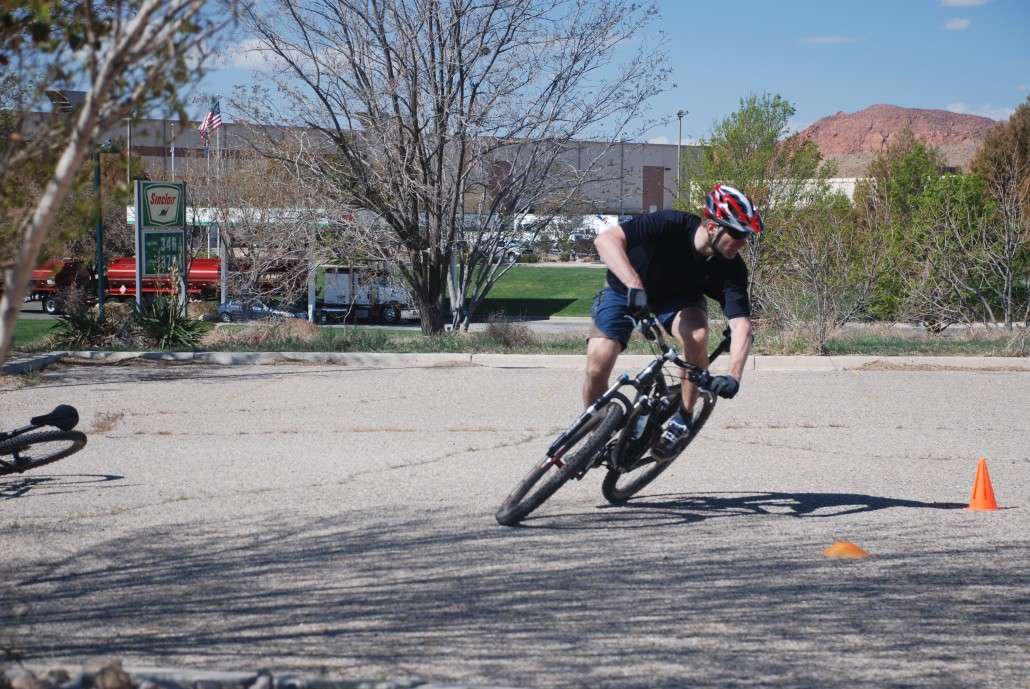
BetterRide camper Rick (who has been mountain biking since the early 1990’s) practicing his cornering skills! Look at that outside elbow, up and out where it should be.
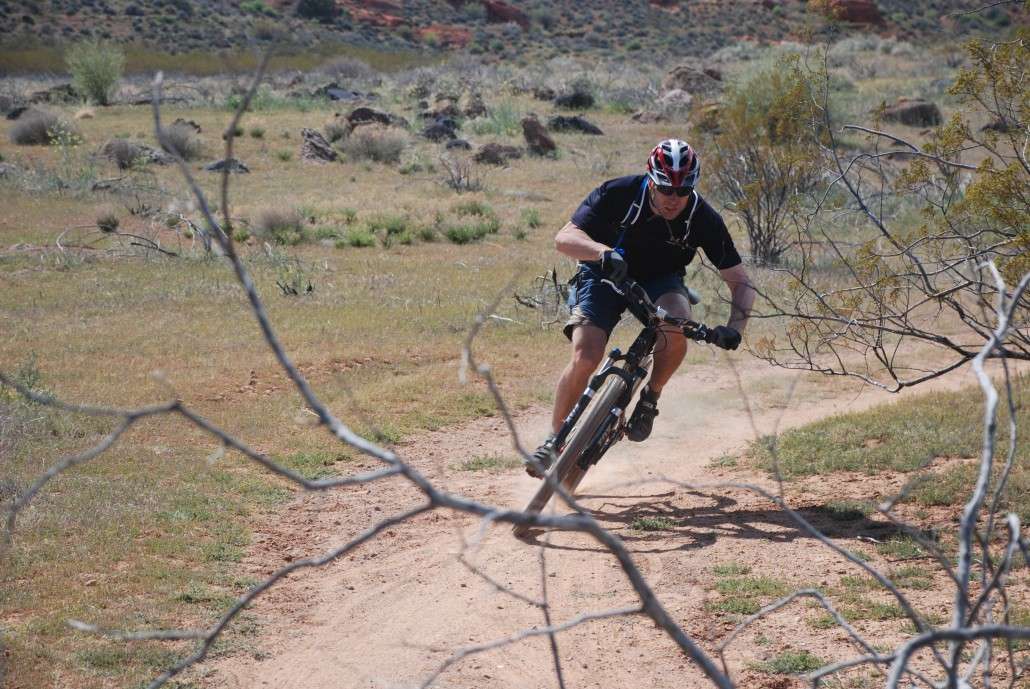
Here is Rick on trail after learning and doing drills on pavement. Not a “scary” trail but he isn’t as sharp as in the parking lot. He needs to look a little further ahead and lead with that outside elbow like he did on the pavement.
Fear is stored in your “Lizard Brian” or “Reptilian Brian”, part of your brain stem where instincts and action occur WITHOUT thought. Have you ever noticed that sometimes, despite knowing that you are supposed to do something (like look ahead) you don’t do it on trail? Have you ever driven home and upon getting home said to yourself, “how the heck did I get home?” That is because knowledge and your “thinking brain” don’t help you do, doing comes from the same Lizard brain where fear is stored, and doing is similar to being on autopilot, your body just does what the autopilot makes it do.
This creates a problem as your conscious, thinking brain wants one thing (to float over that rock) while your Lizard brain wants something else, usually to protect you (get off your bike and walk over the rock). As you probably already know, when it comes to riding your mountain bike the lizard brain always wins! (On a side note this often why you might know exactly how to do something yet still can’t do it.)
How do we get our Lizard Brain/autopilot and conscious thinking brain to work together? Drills! The whole goal of drills is to ingrain a habit or movement pattern. By ingrain, I mean make that habit so dominant that no matter how tough that trail is your body does the correct technique without any thought (hence the autopilot analogy). There is an old saying that is so true, “Amateurs practice until they get it right, pros practice until they can’t get it wrong!” (which means pros never stop practicing!)
Once we understand the correct technique and do drills to ingrain that technique we need to upgrade our self-image as a mountain biker. Let’s say there is tough rock section that has troubled you for years, you have never made it (and probably think something like, “darn, here comes that rock that always messes me up” as you approach it (like the wall in my video above, how to video tutorial coming soon!). Then you take a BetterRide camp and learn the correct combination of skills to get over that rock and wham, you do it! This is when you need to stop, get off your bike, look at that rock and update your self-image. “Wow, that rock used to mess me up every ride, now it is easy, I simply look to victory, manual, shift my weight and off I go (what I did in the video)! That rock is so easy now, watch, I’ll do it again.” Then do it again and really cement the idea that that rock is now easy and you have the skill to do it consistently.
Skill has a huge impact on fear. Cam Zink probably has a lot less fear of the most challenging trail you have ever ridden. Not because he is crazy (he is quite calculating actually) but because his skill at riding steep, challenging line is near/at the top of the sport. More skill (combined with belief in that skill) equals less fear in any given situation.
If you are honestly really skilled but you feel your fear level is not in proportion to your skill work on updating your self-image. If you aren’t really skilled work on improving your skills, then updating your self-image as your skills improve. Remember, fear is there for a reason and it often helps keep us safe but if it is holding you back work on getting your fear into proportion with your skill.
Fear is also where men and women differ greatly! In my next article on Fear and Mountain Biking I will explain what I have learned about how men and women respond to fear and how this difference affects your ride and often your relationship.
Thanks for tuning in! If you know anyone who could benefit from this article please feel free to share it with them. What are you afraid of while mountain biking? What affects your fear? Is your fear based in reality or made up? Please share your experiences with fear below.

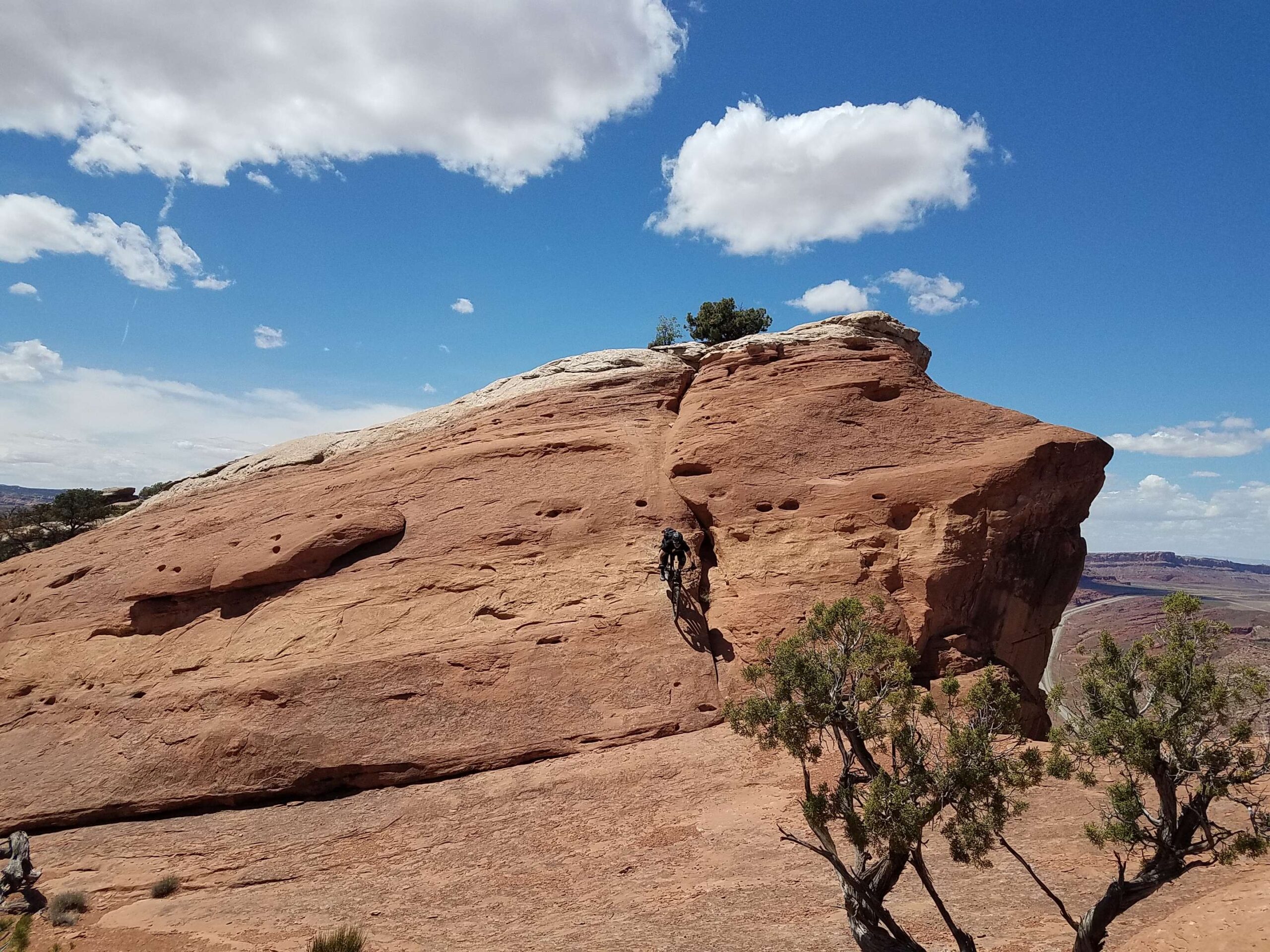
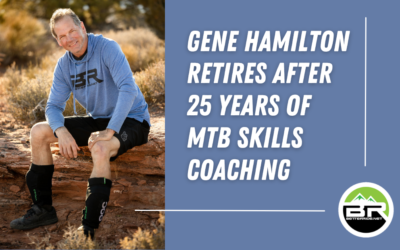
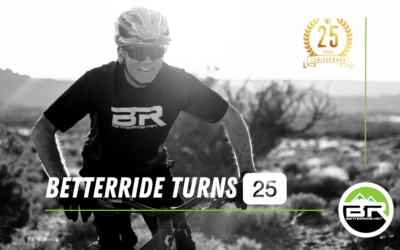
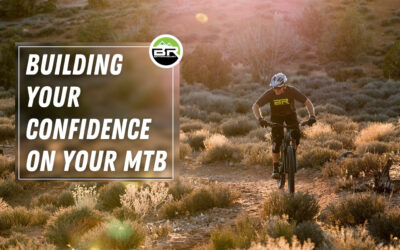
Comments